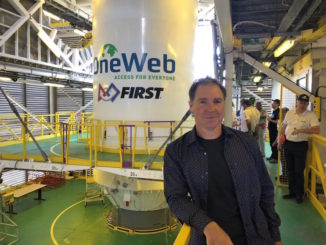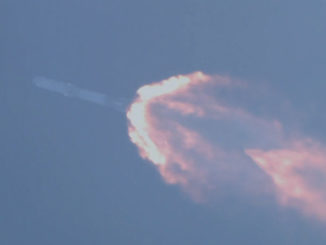STORY WRITTEN FOR CBS NEWS & USED WITH PERMISSION

A Russian cosmonaut and his two NASA crewmates undocked from the International Space Station and landed in Kazakhstan early Friday, returning to an unfamiliar world in the grip of a pandemic that will force them to extend the social isolation they were hoping to end.
“It’s a little bit surreal to think that we’re going back, especially given the situation that’s been unfolding on the ground,” flight engineer Jessica Meir told a reporter Wednesday. “It looks like we are going back to a completely different planet. So it will be certainly an interesting experience for us.”
Starting with the trip back to the United States for Meir and crewmate Drew Morgan.
Because of coronavirus travel restrictions and safety protocols, the astronauts faced long helicopter rides back to their Baikonur Cosmodrome launch site and then a three-hour overland trip to reach a NASA jet standing by at the nearest approved landing site to carry them home to Houston.
“It’s going to be kind of like a ‘Planes, Trains and Automobiles’ scenario where I think we’re going to even end up riding in an ambulance for several hours across the Kazakh steppe in order to get to our airplane,” Meir said. “But this is the first time landing for (us), so we don’t really have anything to compare it to. It’ll just be the way that it is for us.”
Oleg Skripochka, commander of the Soyuz MS-15/61 spacecraft that carried the trio back to Earth, faced a somewhat easier journey. He planned to catch a Russian jet at the cosmodrome for the flight back to his home in Star City near Moscow.
The long trip back to Earth began at 9:53 p.m. EDT Thursday when Skripochka, Meir and Morgan undocked from the aft port of the station’s Russian Zvezda module, leaving NASA astronaut Chris Cassidy and cosmonauts Anatoly Ivanishin and Ivan Vagner behind aboard the lab complex.
The homeward-bound Soyuz MS-15 spacecraft is departing the International Space Station, heading for landing in Kazakhstan with a three-person crew.
The next milestone is the deorbit burn set for 12:22am EDT (0422 GMT). LIVE COVERAGE: https://t.co/m77zJlnsjI pic.twitter.com/uCZx4GsAFf
— Spaceflight Now (@SpaceflightNow) April 17, 2020
Skripochka and Meir launched together last Sept. 25 along with a United Arab Emirates guest cosmonaut who returned to Earth eight days later. Morgan, who flew to the lab with a different crew last July 20, is taking the guest cosmonaut’s seat for the trip home.
After undocking and moving a safe distance away, Skripochka monitored an automated four-minute 41-second rocket firing, slowing the ship by about 286 mph and dropping the far side of its orbit deep into the atmosphere. That set up a landing on the steppe of Kazakhstan near the town of Dzhezkazgan at 1:16 am Friday (11:16 am local time).
They were met by a smaller-than-usual Russian recovery crew that deployed from Baikonur aboard just eight helicopters instead of the usual 12. The team had to use Baikonur, some 250 miles away, as a staging base because of Kazakh travel restrictions.
The reduced recovery team did not include the usual complement of personnel and equipment and the Soyuz descent, normally carried live on NASA’s satellite television channel, went unseen.
But low-bandwidth television routed through Moscow later showed the crew relaxing comfortably in recliners near the descent module, smiling and chatting with support crews while flight surgeons carried out brief medical checks.
With touchdown, Morgan had logged 272 days in space during his first flight. participating in seven spacewalks over the course of an extended mission. Skripochka and Meir, who participated in three all-female spacewalks, logged 205 days aboard the orbital outpost.
All three were to be flown separately by helicopter to Baikonur where they planned to split up, with Skripochka heading for Moscow while Meir and Morgan, escorted by NASA flight surgeons, headed overland to the town of Kyzlorda and the waiting NASA jet.
NASA astronaut Andrew Morgan was the final crew member to be helped out of the Soyuz spacecraft.
Morgan, a US Army physician-astronaut, spent nearly nine months on the International Space Station. https://t.co/m77zJlnsjI pic.twitter.com/39DoOcsFdu
— Spaceflight Now (@SpaceflightNow) April 17, 2020
Once back in Houston, Meir and Morgan will spend their first week in an extended quarantine, using crew quarters at the Johnson Space Center, as a safety precaution. That’s because astronauts returning to Earth after long-duration space flights can exhibit slightly depressed immune systems. Given the coronavirus, that’s an added risk for the returning station fliers.
“So we’ll have a more strict quarantine this time where we’ll be actually staying and living at NASA for at least a week after we land with very limited access to make sure that that we remain healthy,” Meir said.
She described the post-landing protocols as ironic given she and Morgan spent the past six months and more in extreme isolation 250 miles above Earth. Since Oct. 3, only six people have been aboard the station.
“That is the irony,” Meir said of the extended quarantine. “I think it’s actually going to feel more confined and more isolating to do that on Earth than it is up here because that’s something that we expect and train for. We have so many extraordinary things happening around us at all times up here, we don’t really feel like that isolation and confinement is an issue.
“But on the ground, when you’re not used to expecting that and when your daily life consists of going out and doing all these things, I think it’s going to feel a lot more isolating down there than up here.”
Cassidy, Ivanishin and Vagner were launched April 9 from Baikonur amid strict coronavirus protocols to minimize the chances of the COVID-19 virus getting on board the space station.
“This mission, it does feel different, I will tell you, leaving Earth amidst the global crisis and the shutdown, worldwide quarantine,” Cassidy said last week during a news conference with Meir and Morgan. We knew as a crew we were going to be in quarantine … but we didn’t know the whole rest of the world was going to join us.”
With the departure of Meir and Morgan, Cassidy will be the only U.S. crew member aboard the station until SpaceX launches its Crew Dragon spacecraft on its first piloted mission around May 27.
NASA managers had expected to already be launching astronauts aboard SpaceX and Boeing commercial crew ships by now, ending the agency’s sole reliance on the Soyuz. Equally important, the new crew ships are needed to ensure the presence of three to four U.S.-sponsored astronauts aboard the station at all times to carry out a full slate of scientific research.
Anticipating the advent of U.S. commercial crew ships, Russia scaled back production of its three-seat Soyuz spacecraft and only two will be launched this year: the Soyuz MS-16/62S vehicle that carried Cassidy and his crewmates into orbit April 9 and the second on Oct. 14.
NASA currently only has one Soyuz seat — Cassidy’s — under contract with Roscosmos, the Russian space agency. NASA is negotiating for a seat aboard the October flight and possibly a second seat next spring, but no contracts have yet been signed.
At least one U.S. astronaut is required to be aboard the space station at all times to operate and maintain NASA systems.
Tom Stafford, a Gemini and Apollo-era astronaut with a long history of working with the Russians, participated in a joint NASA-Roscosmos review last December. He summed up the consensus in stark terms during a space station advisory committee teleconference on March 30.
“The joint commission believes there is a significant technical risk due to further delay in the U.S. crew vehicle, USCV, schedule,” he said. “Without the USCV and without ensuring additional US Soyuz seats, then there’ll be no U.S. crew members on the ISS after October (21), that is, until we finally get the USCV in operation and up there.
“The ISS has always required at least one U.S. and Russian crew member for safe operations,” he continued. “Without U.S. crew on board, failure of critical U.S. orbital segment (equipment) could result in the loss of the ISS. It is imperative that NASA and Roscosmos find a way to guarantee at least one appropriately trained U.S. and Russian crew members on board the ISS at all times.”
Despite coronavirus restrictions, NASA and SpaceX have been pressing ahead with preparations to launch astronauts Douglas Hurley and Robert Behnken to the space station aboard a Crew Dragon spacecraft at the end of May. Assuming that test flight goes well, NASA hopes to follow up with an operational Crew Dragon flight in mid to late summer carrying a crew of four.



